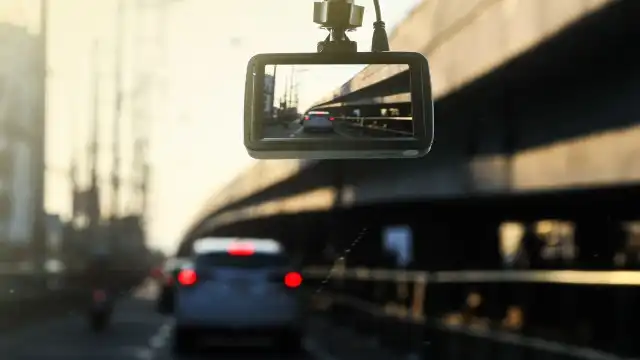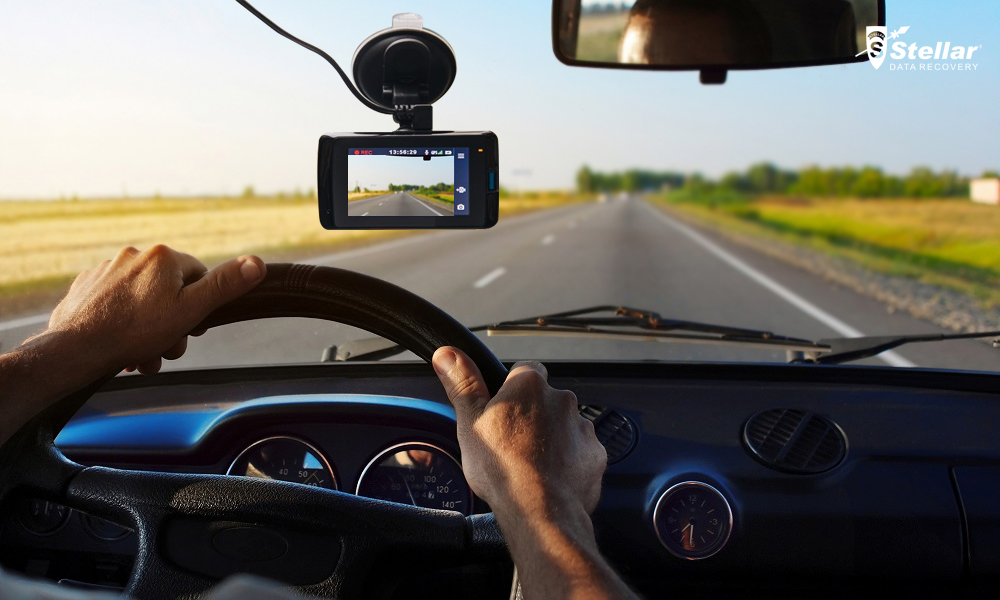-
Table of Contents
- Introduction
- How Dash Cam Footage Can Help Prove Your Innocence in a Car Accident
- The Benefits of Dash Cam Footage for Insurance Claims
- How Dash Cam Footage Can Help Resolve Disputes in Legal Proceedings
- The Pros and Cons of Dash Cam Footage for Law Enforcement
- How Dash Cam Footage Can Help Determine Liability in Car Accidents
“Dash Cam Footage: Your Eyes on the Road, Your Protection in Court.”
Introduction
Dash cam footage has become an increasingly valuable tool for insurance claims and legal proceedings. Dash cam footage can provide an unbiased, objective view of an incident, allowing for a more accurate assessment of the situation. This footage can be used to prove fault in an accident, to prove that an incident occurred, or to provide evidence in a criminal case. Dash cam footage can also be used to help settle disputes between parties, as it can provide an accurate account of what happened. Dash cam footage can be used to protect drivers from false claims, as well as to protect innocent bystanders from being wrongfully accused. Dash cam footage can also be used to help identify and prosecute criminals. In short, dash cam footage is a valuable tool for insurance claims and legal proceedings.
How Dash Cam Footage Can Help Prove Your Innocence in a Car Accident
Dash cam footage can be a powerful tool in proving your innocence in a car accident. Dash cams are small cameras that are mounted to the dashboard or windshield of a vehicle and record video and audio of the driver’s view of the road. This footage can be used to provide evidence in the event of an accident.
Dash cam footage can be used to show the events leading up to an accident. It can provide an unbiased view of the incident, which can be used to determine who was at fault. The footage can also be used to show the speed of the vehicles involved, the actions of the drivers, and any other factors that may have contributed to the accident.
Dash cam footage can also be used to refute false claims made by the other driver. For example, if the other driver claims that you were speeding, the footage can be used to show that you were driving at the speed limit. Similarly, if the other driver claims that you ran a red light, the footage can be used to show that you stopped at the light.
In addition, dash cam footage can be used to show that you were not distracted at the time of the accident. This can be especially helpful if the other driver claims that you were distracted by your phone or other device. The footage can be used to show that you were paying attention to the road and not distracted by any other activity.
Finally, dash cam footage can be used to show that you were not impaired at the time of the accident. This can be especially helpful if the other driver claims that you were under the influence of drugs or alcohol. The footage can be used to show that you were not impaired and that you were driving safely.
In summary, dash cam footage can be a powerful tool in proving your innocence in a car accident. It can provide an unbiased view of the incident and can be used to refute false claims made by the other driver. It can also be used to show that you were not distracted or impaired at the time of the accident.
The Benefits of Dash Cam Footage for Insurance Claims

Dash cam footage can be a valuable asset when it comes to making an insurance claim. Dash cam footage can provide an unbiased account of an accident, which can be used to support an insurance claim. This type of footage can be used to prove fault in an accident, as well as to provide evidence of the extent of the damage.
Dash cam footage can be used to prove fault in an accident. In the event of an accident, the footage can be used to determine who was at fault. This can be especially helpful in cases where there are conflicting accounts of what happened. The footage can provide an unbiased account of the accident, which can be used to determine who was at fault.
Dash cam footage can also be used to provide evidence of the extent of the damage. In the event of an accident, the footage can be used to show the extent of the damage to the vehicles involved. This can be used to support an insurance claim, as it can provide evidence of the extent of the damage.
Finally, dash cam footage can be used to provide evidence of the speed at which the vehicles were travelling. This can be used to determine who was at fault in an accident, as well as to provide evidence of the extent of the damage.
In conclusion, dash cam footage can be a valuable asset when it comes to making an insurance claim. Dash cam footage can provide an unbiased account of an accident, which can be used to prove fault in an accident, as well as to provide evidence of the extent of the damage. Dash cam footage can also be used to provide evidence of the speed at which the vehicles were travelling. This type of footage can be a valuable asset when it comes to making an insurance claim.
How Dash Cam Footage Can Help Resolve Disputes in Legal Proceedings
Dash cam footage has become increasingly popular in recent years, and its use in legal proceedings is growing. Dash cam footage can be used to resolve disputes in a variety of ways, from providing evidence of an accident to providing an unbiased account of an incident.
Dash cam footage can be used to provide evidence of an accident. In the event of a car accident, dash cam footage can provide an unbiased account of what happened. This can be used to determine who is at fault and who is liable for damages. Dash cam footage can also be used to provide evidence of reckless driving or other dangerous behavior.
Dash cam footage can also be used to provide an unbiased account of an incident. This can be especially useful in cases involving police misconduct or other disputes between parties. Dash cam footage can provide an objective account of what happened, which can be used to determine the truth of the matter.
Dash cam footage can also be used to provide evidence of a crime. In cases involving theft or vandalism, dash cam footage can provide an account of the incident that can be used to identify the perpetrator. Dash cam footage can also be used to provide evidence of a hit and run or other criminal activity.
Finally, dash cam footage can be used to provide evidence of a breach of contract. In cases involving a breach of contract, dash cam footage can provide an account of the incident that can be used to determine whether or not the contract was breached.
In conclusion, dash cam footage can be a valuable tool in resolving disputes in legal proceedings. Dash cam footage can provide an unbiased account of an incident, which can be used to determine the truth of the matter. Dash cam footage can also be used to provide evidence of an accident, criminal activity, or a breach of contract.
The Pros and Cons of Dash Cam Footage for Law Enforcement
Dash cam footage has become an increasingly popular tool for law enforcement agencies in recent years. While the technology has the potential to provide valuable evidence in criminal cases, it also has some drawbacks that must be considered. This article will explore the pros and cons of dash cam footage for law enforcement.
The primary benefit of dash cam footage is that it can provide an objective record of events. This can be especially useful in cases where there is a dispute between law enforcement and a suspect or witness. Dash cam footage can provide an unbiased account of what happened, which can be used to corroborate or refute claims made by either party. Additionally, dash cam footage can be used to identify suspects or witnesses, as well as to provide evidence of criminal activity.
However, there are also some drawbacks to using dash cam footage for law enforcement. For one, the footage can be difficult to interpret, as it may not always capture the full context of an incident. Additionally, the footage can be easily manipulated or edited, which can lead to inaccurate or misleading evidence. Furthermore, the footage can be expensive to store and maintain, as well as difficult to access in some cases.
In conclusion, dash cam footage can be a valuable tool for law enforcement, but it is important to consider the potential drawbacks before relying on it too heavily. It is important to weigh the pros and cons of using dash cam footage for law enforcement before making a decision.
How Dash Cam Footage Can Help Determine Liability in Car Accidents
Dash cam footage can be a valuable tool in determining liability in car accidents. Dash cams are small cameras that are mounted to the dashboard or windshield of a vehicle and record video footage of the road ahead. This footage can be used to provide an objective view of the events leading up to and during a car accident.
Dash cam footage can be used to identify the cause of an accident. It can provide evidence of reckless driving, such as speeding, tailgating, or running a red light. It can also show if a driver was distracted, such as by texting or talking on the phone. This footage can be used to determine who was at fault in an accident and who should be held liable for any damages or injuries.
Dash cam footage can also be used to refute false claims. For example, if a driver claims that they had the right of way in an accident, the footage can be used to prove otherwise. It can also be used to disprove claims of reckless driving or distracted driving.
Dash cam footage can also be used to provide evidence of the severity of an accident. It can show the speed of the vehicles involved, the angle of impact, and the amount of damage caused. This can be used to determine the amount of compensation that should be awarded to the victims of an accident.
In conclusion, dash cam footage can be a valuable tool in determining liability in car accidents. It can provide an objective view of the events leading up to and during an accident, identify the cause of an accident, refute false claims, and provide evidence of the severity of an accident. This footage can be used to determine who is at fault and who should be held liable for any damages or injuries.
Discover the significant advantages of using dash cams to capture dangerous driving behaviors and road rage incidents in this insightful resource, highlighting how these devices promote road safety, provide valuable evidence, and contribute to raising awareness about responsible driving.
For more information visit local authories sites to know your rights.




